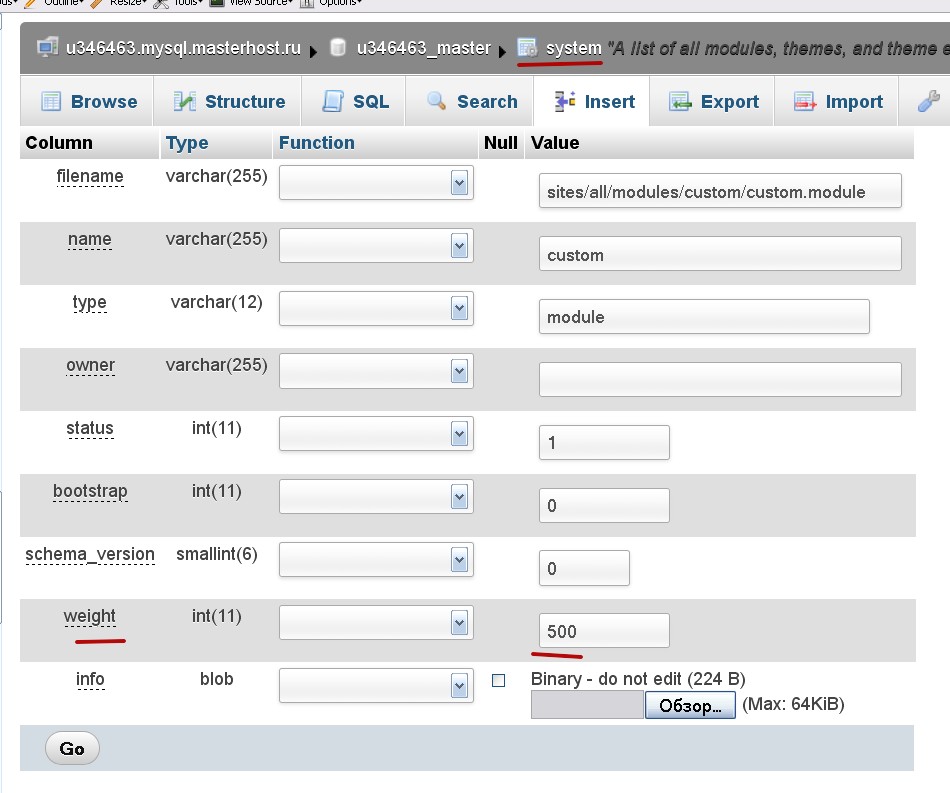Scroll
Drupal en jQuery. Les 8. jQuery UI en jQuery UI Tabs koppelen aan Drupal 7
Bestandscode
/sites/all/modules/custom/custom.info
name = custom description = custom module core = 7.x
/sites/all/modules/custom/custom.module
<?php
drupal_add_library('system', 'ui.tabs');
CSS-code:
#tabs{
border: 0px;
}
.ui-tabs-nav{
background: none;
border: none;
}
HTML-code in node-product.tpl.php:
<div id="tabs">
<ul>
<li>
<a href="#tabs-1">Beschrijving</a>
</li>
<li>
<a href="#tabs-2">Kenmerken</a>
</li>
</ul>
<div id="tabs-1">
<?php
print render($content['body']);
?>
</div>
<div id="tabs-2">
<?php
print render($content);
?>
</div>
</div>
Om te beginnen moet je een aangepaste (custom) module aanmaken.
https://rupalbook.org/content/iz-chego-sostoit-modul-drupala
Nu moet je het gewicht (weight) van de module custom hoger instellen dan dat van de kernmodules. Hiervoor ga je via phpMyAdmin naar de database en stel je het veld weight in op 100 of hoger. Je kunt het record van de module vinden in de tabel system:

Nu kun je in de module custom jQuery UI-plug-ins koppelen, bijvoorbeeld zo:
<?php
drupal_add_library('system', 'ui.tabs');
drupal_add_library('system', 'ui.accordion');
Je kunt deze code aan het begin van de module plaatsen, direct na de openings-tag van PHP.